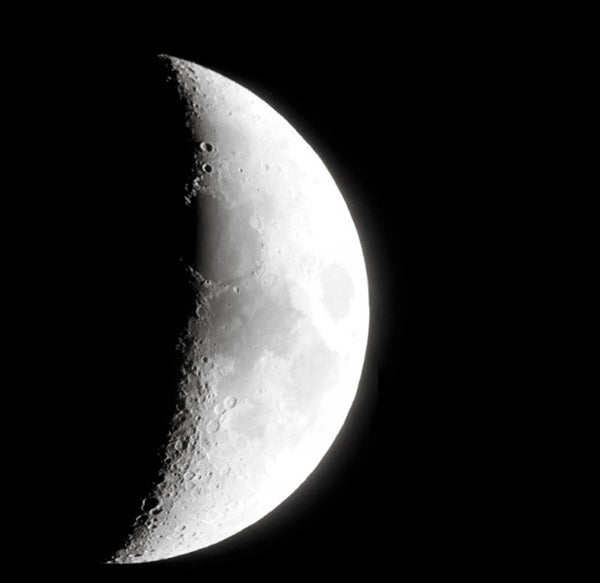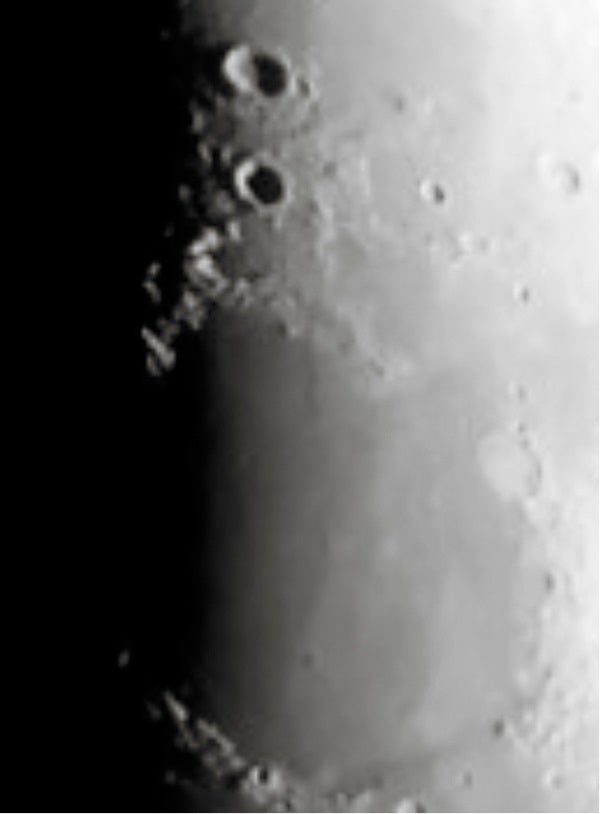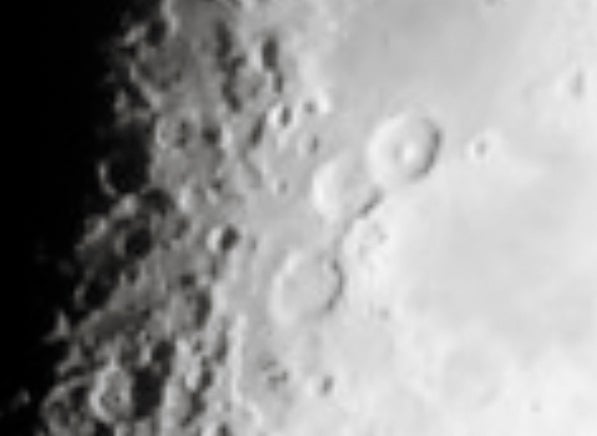It was a daunting task, as my experience with astrophotography was limited to taking 20- to 30-second exposures of constellations with a tripod-mounted, single-lens reflex (SLR) camera and 35mm slide film — and that was back in the late 1970s.
For the first time in my life, I’d be putting camera to telescope. I took a deep breath and gave it a try, and discovered that lunar imaging with a smartphone was a lot easier than taking constellation slides with an SLR camera.
The hardest part came in finding the “sweet spot,” where the smartphone can capture a lunar image from the eyepiece. Not only does the phone have to be positioned precisely both up-and-down and side-to-side, but it also has to be at a 90° angle and the right distance from the eyepiece. The process can be simplified with smartphone adapters, like the ones featured in Tom Trusock’s “Turn your smartphone into an astro-camera” article in the March 2017 issue.
Not owning such an adapter, I had to hold my smartphone in my hand and keep it as steady as possible. This took a lot of practice and patience. Fortunately, I could quickly review each shot and delete it if the result was less than satisfactory. My earliest attempts required a dozen or two takes, but eventually I was able to capture a workable image in the first half-dozen tries.
Enter the neophytes
If you have a smartphone and have never taken astroimages through a telescope, I urge you to give lunar imaging a try. Even a rank beginner can do it. At a star party for a local elementary school, I brought my 4.5-inch reflector and invited parents with smartphones to try their luck taking an image of the Moon. After a quick demonstration with my smartphone, I put one of the parents in charge of the scope and went to my 10-inch reflector to conduct the main part of the star party.
Questions, comments, or suggestions? Email me at gchaple@hotmail.com. Next month: Why I won’t recommend a particular restaurant, movie — or telescope!













